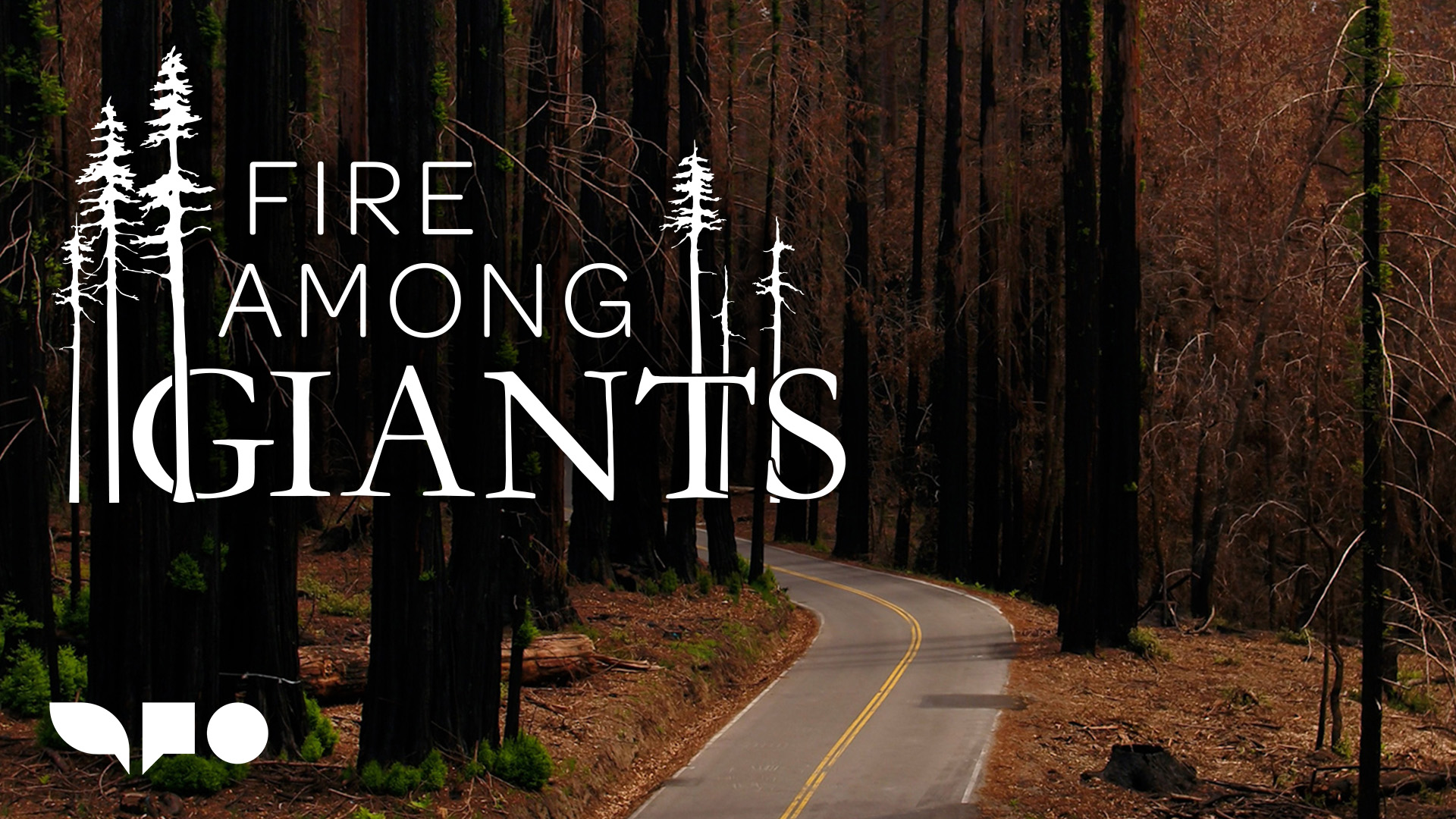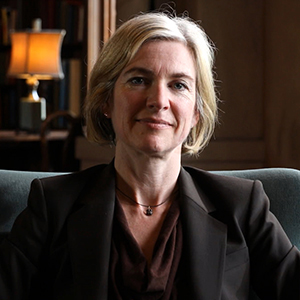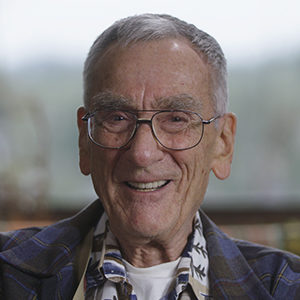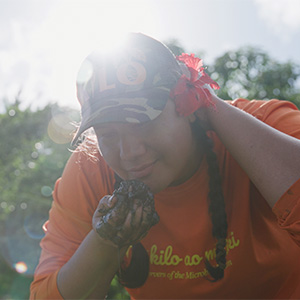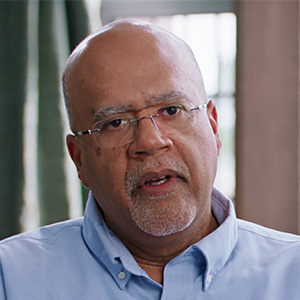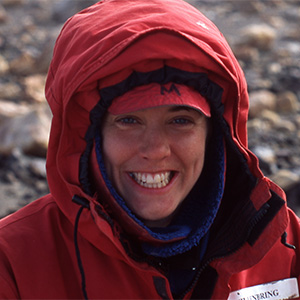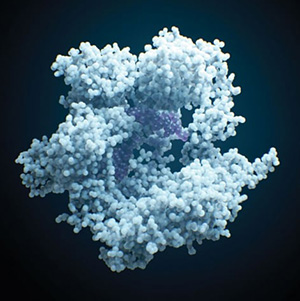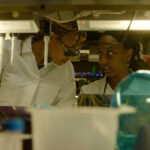Beatrix Jiménez: It is just so quiet. Usually you just hear Dark-eyed Juncos chirping around. You hear more woodpeckers and bees buzzing. Now it’s just, it’s quiet.
Ian Bornarth: Looking around right now. The lushness of this place is gone. The color palette is very different. You know, when you take pictures of the color and the pictures, everything almost looks sort of sepia toned and brown. I mean, it’s because you know, all the light is filtered down through brown leaves and brown needles. If you’re looking at a picture of a, of a burned out forest, you might start to think, oh, you know, what does that smell like? I mean, does it, you know, we don’t, we don’t think in those terms, in terms of what, you know, what does that smell like? What does it sound like? This place still smells like a campfire.
Jiménez: When I first came back into the forest, it felt different. It smelled different. The trace thumbs were just smoldering and it was just, it’s just smoke in the air. This tree stump here. You can just see just how hard it got just that, that shine. And it’s very different to see the canopy just so brown. It’s usually just this vibrant kind of green. It looks like fall, but it it’s, it’s not this is an evergreen forest.
When the fire came through that fire line, wasn’t just kind of going through and consuming everything. As CalFire described it as a dirty burn, there was some patches you could see that just didn’t burn that vegetation like grass, but here it is, and it burned some trees. And that’s what we’re seeing here, we, everything around it, the leaves are, have been exposed to high heat. And but then right here we see just Madrone, just coming through vibrant green and some coast redwoods in the back in some areas. It definitely is this mosaic. You know, you see these redwoods here. You know, the fire went pretty high. You can just see this blackened more than half redwoods are very resistant to fires.

Alex Jones: It’s one of the really unique things about redwoods are, is how thick the bark can get on, on larger redwoods, bigger, much bigger than this. The bark can be up to a foot thick. It’s really fibrous. It doesn’t have much resin in it at all full of tannic acid. This can really protect the tree when it comes to fire. Often, it, you know, particularly times a year and the rainy season, it can really absorb quite a bit of water, but even just that thickness and the lack of resin within the bark and, you know, decrease the flammability or how deep the, the heat and the fire are able to get into into the tree. So it’s hard to kill a redwood.
There’s been some studies done that tried to look at the question of like when you’re in a Redwood forest, how much of what you’re seeing are genetically distinct individuals versus groups of clones. And they found in that study that in a significant area where there are hundreds of trees, they’re finding that, you know, there are very few genetically distinct individuals and the rest were clones. When you look at a, you know, a dense forest like this, it’s an illusion that this is just, you know, full of all these individuals when they’re actually just, you know, pieces of, of themselves essentially scattered throughout the forest,
Jiménez: Look up to the crowns, especially on the redwoods and see if there is any little bits of green. You know, some leaves are just, you know, all brown, but little spots is patches of green. As we’re looking at this row, what up although the fire from the base here only went up so high and charred that much, but if we go over here, we can see this many coast redwoods and they’re beginning to sprout from their trunk. This is one of the cool things of redwoods. It’s called epicormic sprouting, where you start to just get new leaves just directly growing from the trunk. And over time they start to look more fuzzy almost like a pipe cleaner. And it’s just such a cool view. And even just looking at this there’s one coming up right here, and it just looks like an asparagus on the tree.
Oh, nice. Oh, it looks like something happened to its tail. It looks like it’s been through some stuff, but you know, it’s, it’s here. Since I’ve been here I’ve not seen any, any amphibians. So this is really exciting to see a California Newt. Just in, these last few days, you can just see just the green. It’s just really just coming back to life. It feels soft. It feels fluffy. Now that the rains have come, a lot of that moss is more lush and green, and you can see here on this big leaf maple, some of the leaves are brown due to the fire, but if you watch it, you can see that moss is just glowing.
Here we just see new sprouts coming up. Little seedlings. These haven’t unfolded just yet. As you look down this, this, this little branch here, you see it starts to open up and then here’s the next one. And then eventually it will look more like this. More what your typical, what you commonly see are redwoods. And then one day, hopefully it will grow to be big redwoods, just like all these here.

Jones: Just imagine this seed bursting forth and becoming like the maximum potential that a redwood could become, you know, just like 14, 15 feet in diameter or whatever, and almost 400 feet tall. And just, just this massive being. All that genetic material packed into something so tiny. I just think it’s, you know, I don’t know. It doesn’t matter what I think about it. Coast redwoods are the tallest trees. You know, you see 379 feet as a figure, often cited from a particular tree up in Northern California, tallest trees in the world.
When you think of like being in a forest like this, and thinking about all the water, that’s just flowing through these trees right now and just like coming up from the ground and moving up through the trunk, being absorbed by the leaves up above just kind of cycling water from the ground, back up to the sky. All the, you know, hundreds of gallons that are within all these trees. We’re essentially just walking at the bottom of a lake right now.
Jiménez: Everything’s just already starting to come back. First banana slug I’ve seen so far. Yeah they really are this beautiful, just banana yellow. Yeah. It’s, it’s, it’s beautiful just to see these vibrant green against these burnt trunks of the redwoods.

Bornarth: There’s this beautiful contrast of the, these really just sort of blackened trees with this beautiful green growth. Right now just about any color really stands out. I mean, when they’re, when they’re in front of the black trees, they really do jump out. You know, and up on the hill over here, there’s some nice greeneries, you know, some ferns popping up on the hills and things. So that’s actually kind of nice to, it’s nice to see all of that. And it does show up pretty clearly cause everything else is almost sort of almost monochromatic, but not quite. You know, you think it’s over after the fire, but it’s, that’s just the beginning.
Jiménez: I do see hope when I just start to see a lot of these trees beginning to sprout the redwood forest, it has lived through just so much. And a lot of these redwoods, you know, they’re, you know, probably no more than a hundred years old, but I mean a hundred years, that’s, that’s a lot to experience. No matter what the plants will come back, the forest will come back. It might come back in a different shape or form, but it would come back.
Elliot Kirschner: Executive Producer
Sarah Goodwin: Executive Producer
Ian Cheney: Director
Rebecca Ellsworth: Editor
Derek Reich: Cinematographer
Andrew Oedel: Sound Design
Shannon Behrman: Senior Producer
Kevin McLean: Producer
Chris George: Design and Graphics
Maggie Hubbard: Design and Graphics



